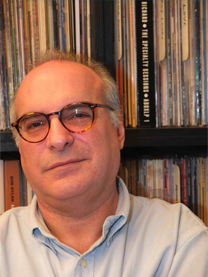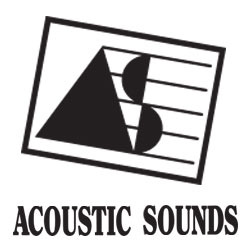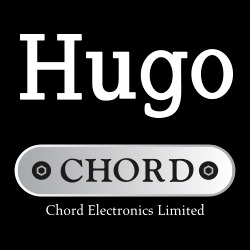You can just imagine the glee amongst the boffins in Bang & Olufsen Automotive’s R&D Department when the Rapide was announced. Still basking in the glow of the sound system they produced for the astonishing DBS, the designers were asked for more of the same, with the emphasis on ‘more’. Tell anyone associated with top-quality audio systems – on wheels or off – that they’ve been granted more listening room and they’ll jump for joy: that extra space is to an audio engineer what a long, smooth open road is to a gear-head.
It’s simple physics: bass quality, which provides the “weight” to music, depends on the size of the speaker to produce those low notes. It’s a case of “bigger is better”, for the laws of acoustics demand that these sound waves have space in which to flow. You already know that a hi-fi system sounds more open and lifelike in a large room than a small one, and that bigger speakers sound more realistic than tinny, tiny ones. You can even ‘try this at home’. Listen to a clock radio or an iPod in a dock in one of the smaller rooms in your home. Then try it in the lounge: the music spreads, it flows. It even seems to breathe.
What the Rapide’s added cabin dimensions have given to the wizards at B&O is more space in which to play with the both the physical size of the hardware and the way sound is dispersed through the passenger area. Think about it: if you need to accommodate a 10in or 12in subwoofer, and you have either a tiny GT, or a four-door saloon with an ample boot, the latter offers greater potential. Imagine the bass unit alone as occupying roughly half the size of a piece of hand luggage as allowed on a plane, and you can picture how the audio equipment eats into the car’s free spaces.
Just as B&O optimised each sound system to address specifically the dimensions and interior details of the DBS, DB9 and Vantage, their work for the BeoSound Rapide System exploited the car’s environment with the same obsessive precision. Their task was compounded by two challenges which did not affect the DBS: how to deliver the correct spatial effects to four passengers rather than two, and how to fill nearly double the cabin volume.
B&O’s Morten Lydolf, who worked on the development of the BeoSound Rapide, explained that, “We were so pleased with the sound of the system in the DBS that we wanted to replicate it exactly in the Rapide, but for four passengers instead of two.” To accomplish this, the BeoSound Rapide sound system increases the component count over the virtually identical DBS’ system with 15 active speakers instead of 13, through the addition of two more 140mm woofers. They also raised the total amplifier power to “a bit more than the DBS’ 1000 watts,” according Lydolf. In effect, B&O duplicated in the rear of the Rapide what you find in the front of the DBS.
As Aston Martin owners have come to expect, the BeoSound Rapide system integrates completely with the control unit in the vehicle. Conveniently, to free the driver from having to fine-tune the system manually when the number of passengers changes, the system can detect how many passengers there are in the car. The BeoSound Rapide then automatically adjusts the sound’s directional characteristics and sonic focus accordingly.
Cleverly, this is aided by integration with a familiar safety feature: the adjustments occur when the seatbelts are plugged in, depending on which seats are in use – surely the most pleasant inducement ever to “buckle up”. The driver, however, retains full control, because this automatic setting is accompanied by user-accessible settings to optimise the system for front-only, driver-only, rear-only or “all seats”.
From an audiophile standpoint, the system ticks the right boxes, not least in that it uses Bang & Olufsen’s highly-regarded proprietary ICEpower® technology. This system revolutionised the way that the audio industry addresses the seemingly incompatible demands for both high output power and hi-fi sound quality from electronics that are both ultra-compact and low in power consumption.
Familiar to those who have enjoyed Bang & Olufsen’s in-car wizardry in other Aston martins are the iconic motorised tweeter units forged around the company’s patented and automatically operated ALT (Acoustic Lens Technology). They emerge smoothly from their hiding places to deliver the generous 180° horizontal dispersion of the high frequency sounds, to provide listeners with an expansive, almost cavernous sense of space. It’s a rare opportunity for passengers to hear and sense an authentically-proportioned sound stage regardless of which seat is occupied.
Further automation frees the passengers from having to adjust the sound: B&O’s automotive sound systems adapt automatically to changing noise conditions, eliminating any need to adjust the volume up or down to compensate for an increase in the sonorous sound of the hand-crafted engine, or for changing road or weather conditions. And it’s not just the volume that the system controls invisibly: BeoSound Rapide also adjusts bass, mid-range and treble levels according to the noise conditions in the cabin and the vehicle’s speed.
It’s not enough for the BeoSound Rapide system to sound beautiful: it has to look beautiful, too. Just as the operational functions are integrated into the control system, so are the units physically integrated with visual fluidity. The speakers are hidden behind smoothly contoured, aluminium loudspeaker grilles that complement hand-crafted interior, as if having been sculpted as an integral part of the Rapide’s gorgeous cabin. So, for those who have experienced the seemingly irresolvable dilemma of housing a state-of-the-art sound system in a carefully-appointed domestic living space – every audiophile’s wife’s nightmare – thanks must be given to B&O for doing it so faultlessly. Then again, they’ve been doing it in homes for 85 years.
(Aston-Martin Magazine, 2010)






















